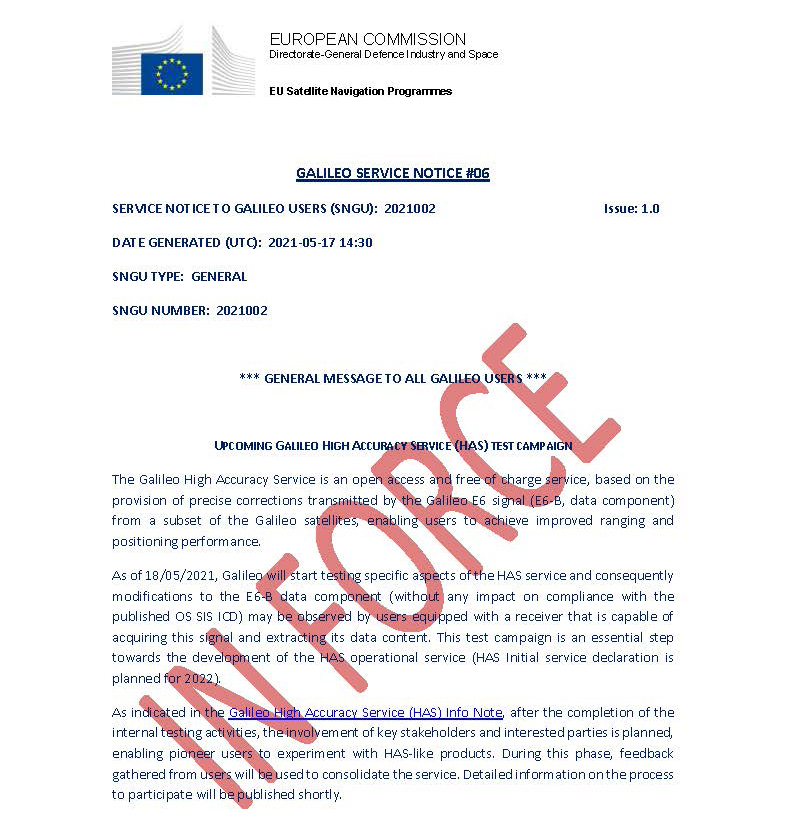Official broadcast for testing of the Galileo High Accuracy Service (HAS) has begun. Users equipped with a receiver that is capable of acquiring this signal and extracting its data content can start observing and testing specific aspects of the HAS service and consequent modifications to the E6-B data component (without any impact on compliance with the published OS SIS ICD) .
The test campaign is an essential step towards the development of the HAS operational service. HAS Initial service declaration is planned for 2022. Involvement of key stakeholders and interested parties is planned, enabling pioneer users to experiment with HAS-like products. During this phase, feedback gathered from users will be used to consolidate the service.
An Information Note on the HAS provides an overview of the main characteristics of the service, along with information on features such as service levels, target performance, an implementation roadmap, and an overview of the target markets for the service.
HAS Phase 1 will cover the provision of an initial Galileo High Accuracy Service resulting from the implementation of a high-accuracy data generation system processing Galileo data only. Phase 2 will see full provision of the Galileo High Accuracy Service, meeting its target performance of 20 cm worldwide positioning accuracy after 2024.
For a technical explanation of the HAS, see earlier Inside GNSS articles:
“Galileo’s High Accuracy Service: Field Experimentation of Data Dissemination Schemes.”
“Development of a Galileo High Accuracy Service (HAS) Algorithm and User Terminal Contracted.”
For a detailed technical presentation on the HAS, as well as Hexagon | NovAtel’s RTK From the Sky and the International GNSS Service’s Real-time Service, view the webinar “PPP Set Free: Precise Point Positioning for Everyone.”






